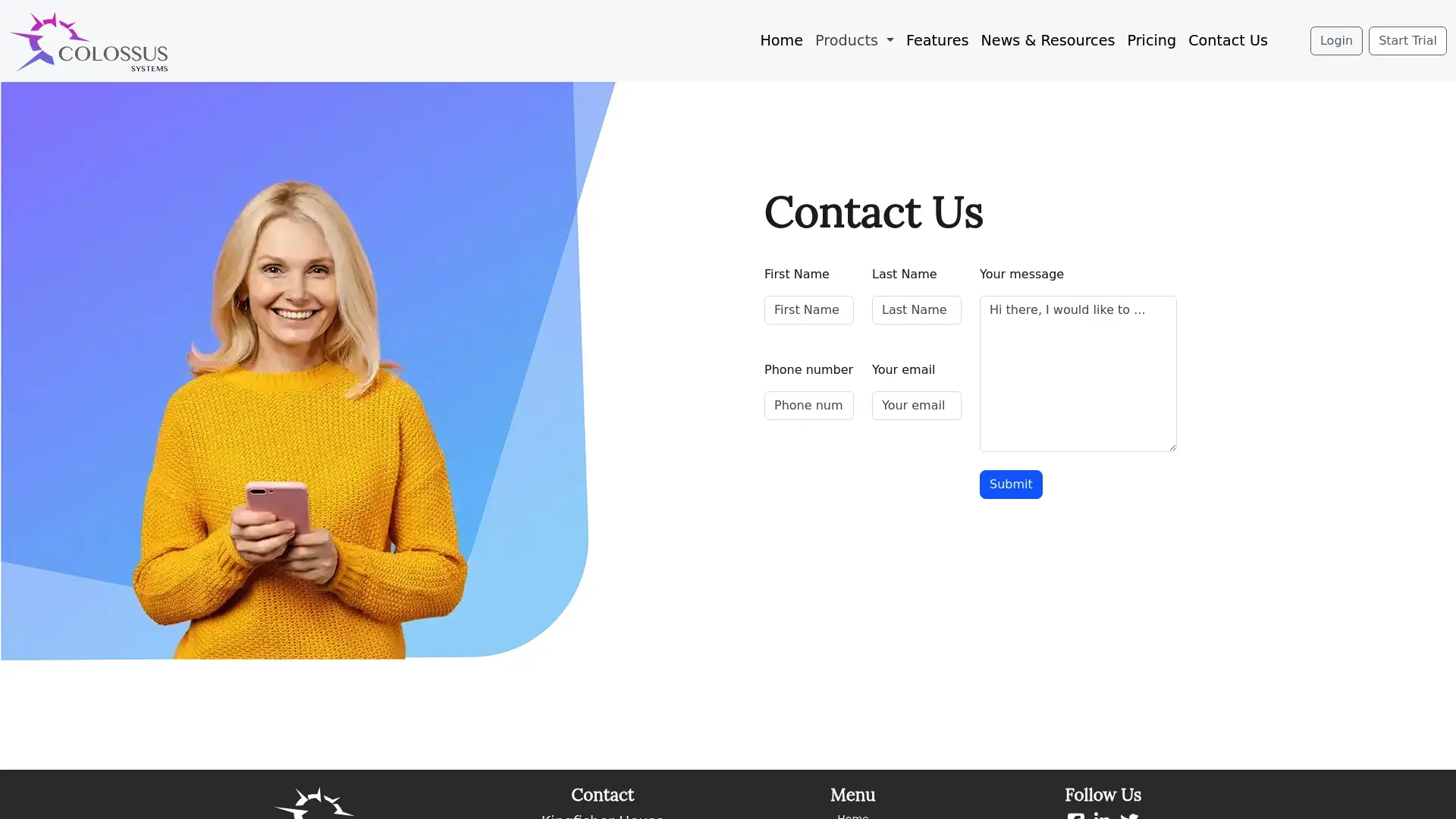Understanding the Member Tracking System for Organisations

Managing members used to mean endless spreadsheets and lost paperwork. Now, digital platforms can track every interaction in real time with stunning precision. Here is the surprise. Organisations using modern member tracking systems report up to a 30 percent increase in member engagement thanks to automated insights and analytics. But the real shock is this. The biggest change is not just convenience. It is that these systems can predict and influence behaviour, turning raw data into real strategic power for every type of membership group.
Table of Contents
- What Is A Member Tracking System?
- The Importance Of Member Tracking Systems
- How Member Tracking Systems Function
- Key Features Of Effective Member Tracking Systems
- Real-World Applications Of Member Tracking Systems
Quick Summary
| Takeaway | Explanation |
|---|---|
| Centralise member information efficiently | Member tracking systems allow organisations to manage all member data in one place, facilitating better organisation and accessibility. |
| Utilise real-time engagement analytics | These systems provide insights into member participation, enabling targeted strategies for improving engagement and retention. |
| Automate administrative processes | By automating tasks like membership renewals and data updates, organisations can significantly reduce their manual workload and improve efficiency. |
| Drive strategic decision-making | Access to comprehensive data empowers organisations to make data-driven decisions, enhancing member satisfaction and organisational growth. |
| Enable tailored communication strategies | Member tracking systems allow for personalised communication based on member behaviour and preferences, improving relationship management. |
What is a Member Tracking System?
A member tracking system is a specialised digital platform designed to help organisations comprehensively manage and monitor their membership ecosystem. This sophisticated software solution enables associations, nonprofits, educational institutions, and professional groups to centralise member information, track engagement, and streamline administrative processes.
Core Purpose of Member Tracking Systems
At its fundamental level, a member tracking system serves as a sophisticated digital repository that captures and organises critical member data. Unlike traditional spreadsheets or manual record-keeping methods, these systems provide real-time insights into member interactions, demographics, participation levels, and organisational contributions.
![]()
Key functionalities typically include:
- Centralised member profile management
- Automated membership renewal tracking
- Comprehensive engagement analytics
- Customisable reporting capabilities
How Member Tracking Systems Work
Member tracking systems operate through integrated databases that collect and process member information across multiple touchpoints. Understanding membership software tracking reveals how these platforms transform raw data into actionable intelligence. By leveraging advanced algorithms and data integration techniques, these systems create comprehensive member profiles that go beyond basic contact information.
According to UNESCO’s educational tracking initiatives, similar tracking methodologies have proven instrumental in understanding participant dynamics. For membership organisations, this translates into the ability to:
- Predict member retention risks
- Personalise communication strategies
- Identify high-potential engagement opportunities
- Develop targeted retention programmes
The fundamental goal of a member tracking system is not just data collection, but transforming that data into strategic insights that drive organisational growth and member satisfaction.
The Importance of Member Tracking Systems
Member tracking systems have become critical infrastructure for modern organisations seeking strategic member management and sustainable growth. These sophisticated platforms transcend basic record-keeping by transforming raw membership data into powerful organisational intelligence.
Strategic Decision Making
Traditional membership management approaches often rely on intuition and limited data points. Member tracking systems revolutionise this paradigm by providing comprehensive, data-driven insights that enable precise strategic planning. Member management software demonstrates how organisations can leverage technology to make informed decisions about membership engagement, retention, and development.
Key strategic advantages include:
- Predictive member behaviour analysis
- Targeted communication strategies
- Personalised member experience design
- Risk assessment and mitigation
Operational Efficiency and Resource Optimization
By automating complex administrative tasks, member tracking systems significantly reduce organisational overhead. According to Pew Charitable Trusts research on performance management, effective outcome monitoring systems enable organisations to allocate resources more effectively and track programme performance with unprecedented precision.
The operational benefits extend beyond simple data management:
The following table outlines and compares the strategic and operational benefits of member tracking systems highlighted in the article to facilitate quick reference for readers.
| Benefit | Strategic Value | Operational Value |
|---|---|---|
| Predictive member behaviour | Enables risk assessment and proactive engagement strategies | Allows identification of retention risks |
| Targeted communication strategies | Supports personalised member experience | Facilitates relevant messages for diverse audiences |
| Data-driven decision making | Guides organisational growth and satisfaction | Informs resource allocation and process improvements |
| Automation of administrative tasks | Frees up staff for higher-value activities | Reduces manual workload and minimises errors |
| Real-time reporting | Provides timely insights for leadership | Enhances monitoring and rapid response to trends |
- Reduced manual administrative workload
- Enhanced accuracy of member records
- Seamless integration with other organisational systems
- Real-time reporting and analytics
Ultimately, member tracking systems represent more than technological tools. They are strategic assets that empower organisations to understand, engage, and grow their membership base with unprecedented clarity and efficiency.
How Member Tracking Systems Function
Member tracking systems operate through sophisticated technological architectures that integrate multiple data sources, advanced algorithms, and intelligent processing mechanisms. These systems transform raw membership information into actionable strategic insights through comprehensive data management strategies.
Data Collection and Integration
Robust data collection represents the foundational layer of member tracking systems. These platforms seamlessly aggregate information from diverse sources such as website interactions, event registrations, communication channels, and membership forms. Membership Database Designed for Efficiency and Member Satisfaction illustrates how modern systems create holistic member profiles by consolidating fragmented data points.
Key data integration mechanisms include:
- Automated data synchronisation
- Multi-channel information capture
- Standardised data formatting
- Real-time update capabilities
Advanced Processing and Analytics
Once collected, member data undergoes sophisticated processing using intelligent algorithms and machine learning techniques. According to School Data Leadership Organisation research, these systems can transform raw data into meaningful insights by applying complex analytical models.
The analytical capabilities typically encompass:
- Predictive behaviour modelling
- Segmentation and clustering
- Performance trend identification
- Customised reporting generation
These advanced processing techniques enable organisations to move beyond simple record-keeping, transforming membership data into a strategic asset that drives targeted engagement and organisational growth.
Key Features of Effective Member Tracking Systems
Effective member tracking systems are distinguished by comprehensive technological capabilities that extend far beyond basic data management. These sophisticated platforms integrate multiple advanced features designed to provide organisations with nuanced insights and seamless operational management.
Advanced Data Management
Comprehensive data handling represents the cornerstone of robust member tracking systems. Improving Member Engagement Strategies emphasizes the critical role of sophisticated data management in driving organisational success. These systems must offer powerful features that transform raw information into strategic intelligence.
Key data management capabilities include:
- Multi-source data integration
- Real-time synchronisation
- Secure data encryption
- Customisable data fields
- Advanced permission controls
Intelligent Analytics and Reporting
According to Research on Organisational Performance Tools, tracking systems must deliver more than simple data collection. They need to provide actionable insights through sophisticated analytical frameworks that enable strategic decision making.
Critical analytical features encompass:
- Predictive member behaviour modelling
- Comprehensive engagement scoring
- Segmentation and targeting tools
- Customisable dashboard reporting
- Performance trend visualization
These intelligent features transform member tracking systems from passive record-keeping tools into dynamic strategic assets that empower organisations to understand, engage, and grow their membership base with unprecedented precision and effectiveness.
This table summarises the main features of effective member tracking systems described in the article, helping organisations evaluate solutions based on their core capabilities.
| Feature | Description |
|---|---|
| Multi-source data integration | Consolidates information from various channels |
| Real-time synchronisation | Keeps member data updated instantaneously |
| Secure data encryption | Protects sensitive member information |
| Customisable data fields | Allows tailored data capture to suit organisational needs |
| Advanced permission controls | Manages user access levels securely |
| Predictive behaviour modelling | Anticipates member needs and risks |
| Engagement scoring and segmentation | Analyses participation and targets member groups |
| Customisable dashboard reporting | Offers tailored visual insights and analytics |

Real-World Applications of Member Tracking Systems
Member tracking systems have emerged as transformative technologies across diverse organisational landscapes, enabling sophisticated management strategies that extend far beyond traditional record-keeping practices. These intelligent platforms provide nuanced insights and operational capabilities tailored to specific sector requirements.
Professional Associations and Industry Networks
Professional membership organizations represent prime beneficiaries of advanced tracking systems. Who Can Benefit from Member Management Software demonstrates how these platforms revolutionise network management and engagement strategies. By capturing detailed interaction histories, professional associations can develop targeted communication protocols, track career progression, and facilitate meaningful networking opportunities.
Key applications in professional networks include:
- Tracking professional certifications
- Monitoring continuing education credits
- Analysing member skill development trends
- Facilitating targeted professional development recommendations
- Supporting industry-specific credential management
Educational and Research Institutions
According to IoT-Based Tracking Systems Research, technological tracking mechanisms are transforming educational management approaches. Academic institutions leverage member tracking systems to monitor student engagement, analyse participation patterns, and develop personalised learning interventions.
Critical applications in educational contexts encompass:
- Student attendance monitoring
- Academic performance tracking
- Alumni engagement management
- Research collaboration mapping
- Grant and funding opportunity identification
These real-world applications demonstrate how member tracking systems transcend simple data collection, emerging as strategic tools that enable organisations to understand, predict, and proactively shape member experiences across multiple professional domains.
Take Control of Member Engagement With a Smarter Approach
Are you still relying on outdated spreadsheets or manual record-keeping? Many organisations struggle with missed renewals, incomplete member information, and slow reporting. This article has explored how a robust member tracking system not only centralises your data but turns it into real-time strategic assets for retention and growth. If key challenges like tracking engagement or delivering personalised experiences sound familiar, you are not alone. Modern membership organisations demand advanced analytics, centralised profiles, and automated processes to stay ahead.

Now is the time to move beyond basic systems. Colossus Systems unifies member management, event planning, and digital communications within a single powerful platform. You gain advanced analytics to inform strategy and customisable tools for every touchpoint. Connect with us today at Colossus Systems Contact to discover how our tailored solutions can solve your engagement challenges and drive your organisation forward. Your members expect more – let us help you deliver it efficiently.
Frequently Asked Questions
What is a member tracking system?
A member tracking system is a specialised digital platform that helps organisations manage and monitor their membership ecosystem by centralising member information and tracking engagement.
How do member tracking systems improve operational efficiency?
Member tracking systems automate complex administrative tasks, reducing overhead, improving data accuracy, and enabling real-time reporting and analytics.
What data can be collected using a member tracking system?
Member tracking systems can collect various data, including member demographics, engagement levels, event participation, and communication histories, all of which contribute to creating comprehensive member profiles.
What are the benefits of using analytics in member tracking systems?
Analytics in member tracking systems enable organisations to perform predictive behaviour modelling, identify engagement opportunities, and develop targeted retention programmes, driving strategic decision-making and member satisfaction.